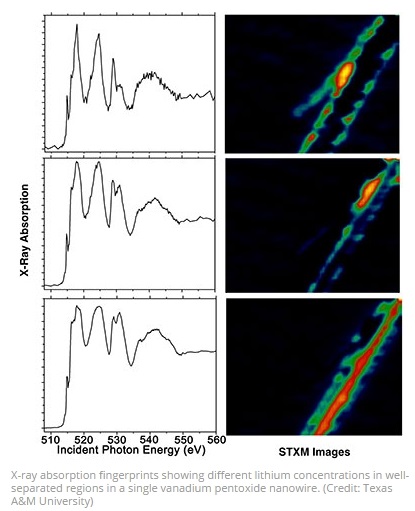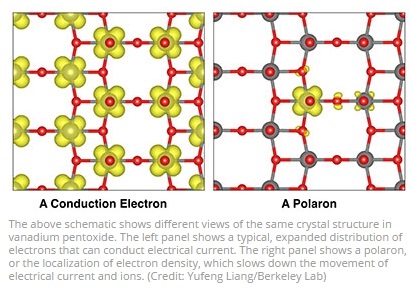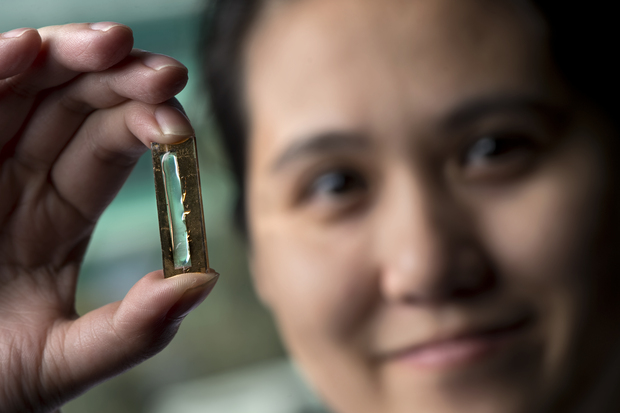An international team of researchers, including a team from the Berkeley National Laboratory have found reason to believe interactions between electrons and ions may slow down the performance of a critical material in the next generation batteries.
As the prominence of the tech age demands more efficient, renewable clean sources of energy, more efficient batteries will be desired in order to power our mobile devices, laptops, and vehicles. That is, lighter, more energy dense and faster charging batteries will be increasingly sought after. With its layered atomic structure, Vanadium Pentoxide features greater surface area for the constant flow of lithium ions. As such, its highly regarded as the nanostructure material poised to provide the desired qualities in the next generation lithium ion batteries.
“The Speed with which electrons can enter and exit the cathode determines how much power the battery can provide and how quickly it can be recharged, both critical factors to consider in the world of mobile electronics or electrification of our automotive fleet,” said David Prendergast, staff scientist at the Molecular Foundry, and DOE Office of Science User Facility at the Berkeley Lab.
However, despite the potential recognized in vanadium pentoxide, it has yet to be widely adopted, as real world tests have revealed lackluster results.

New research published in the Nature Communications journal revealed the reasoning behind the slowdown. The study, led by Sarbajit Banerjee (professor of chemistry at the University of Texas A&M), shows that a phenomenon called “small polaron formation” bogged down the flow of electrons in vanadium pentoxide nanowires as it interacted with lithium-ions.
Working with Prendergast, and postdoctoral fellow Yufeng Liang, Banerjee’s team explored the compound through a user project at the Molecular Foundry. Using the Scanning Transmission X-ray Microscopy at The Canadian Light Source, Banerjee’s team made 2D maps of electronic properties of synthesized vanadium pentoxide nanowires in order to visualize the issue. With the model lithium-ion cathode maps, they were able to interpret their findings at the Molecular Foundry lab in Berkeley.
Through these nano scale measurements, there is evidence that electrons in vanadium pentoxide sit predominantly where vanadium atoms and lithium ions meet, causing a distortion in the surrounding crystal structure. As such, a “small polaron” is denoted by a charged particle (the electron) and an associated local structure distortion.
As Liang describes, “Small polarons have been proposed as the cause of the slowdown in lithium-ion transport inside cathode materials, but they had not been seen directly until now… With the help of our simulation techniques, we were able to decipher the polaron information buried in the X-ray spectra.”

Prendergast also added, “The electrons, once coupled with the lithium ions, appear content to sit instead of moving freely, in essence, trapping or stranding the flow of energy.”
Although this is a setback in original endeavors for the next generation batteries, at least the issue has been identified, allowing researchers to focus on finding a solution for this incompatibility.
For his work, Banerjee had the support of the National Science Foundation, while the U.S Department of Energy supported any theoretical and computational aspects at the Molecular Foundry.
Featured Image: Gas2.org










